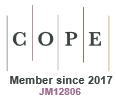Just Accepted
This article has been peer reviewed and accepted for publication. It is in production and has not been edited, so may differ from the final published form.
Towards Zero Discrimination: A Survey on HIV-related Stigma and Discrimination among Healthcare Providers in a Medical Centre in Southern Taiwan
Abstract
Background: HIV-related stigma and discrimination among healthcare providers (HCPs) deter people living with or at high risk of HIV (PLHIV and key populations) from seeking and adhering to care. Understanding its determinants is essential for targeted interventions. Methods: We administered the validated Measuring HIV Stigma and Discrimination Among Workers in Health Facilities Questionnaire to staff of an HIV-designated teaching hospital in Taiwan. Descriptive statistics were followed by multivariable logistic-regression models adjusting for gender, age, years in service, infectious diseases (ID) ward experience, the number of PLHIV cared for in the past 12 months, and personal training program. Model diagnostics included variance-inflation factors and Hosmer-Lemeshow tests. A post-stratification weighting sensitivity analysis was performed to correct the 84 % female sample toward the hospital’s 70 % female workforce. Results: Of 550 respondents, 42 % had cared for PLHIV in the previous year and 8.4 % worked in the ID ward. Unnecessary precautions were reported by 90.1 %, worry about occupational HIV acquisition by 83.3 %, negative attitudes toward PLHIV by 70.2 %, professional refusal toward key populations by 38.0 % and observed discriminatory behaviors by 34.7 %. In adjusted analyses, HIV-related training was associated with lower fear of infection (aOR 0.35), reduced observed stigma (aOR 0.50), and higher willingness to serve key populations (aOR 2.36). Infectious diseases ward experience also reduced fear (aOR 0.38). Age showed a marginal protective effect on fear, while gender and prior contact with PLHIV were not significant. Weighted estimates were consistent, supporting robustness of findings. Conclusions: HIV-related stigma remains pervasive among HCPs, with lack of HIV-specific training and limited clinical exposure being risk factors. Tailored education, ongoing surveillance and further interventions are urgently needed within healthcare facilities to promote a friendly medical environment for equitable care for PLHIV.
SH24172 Accepted 01 July 2025
© CSIRO 2025


